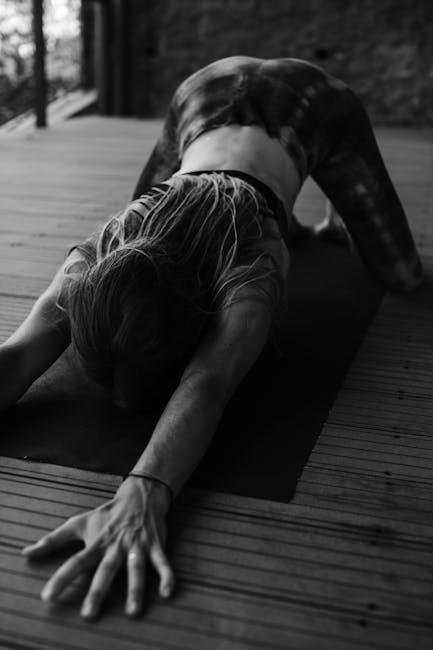Paddle into Power: Beginner-Pleasant Kayak Exercises for Strength
As the sun rises over the tranquil waters and the soft rustle of leaves creates a symphony of nature, kayaking beckons both seasoned adventurers and newcomers alike to embrace the beauty of exploration. For beginners, the allure of gliding across serene lakes and rivers can be accompanied by the desire to build strength and endurance. But fear not, for a journey into kayak fitness doesn’t require a background in extreme sports or years of training.In this article, we’ll delve into a curated collection of beginner-friendly exercises designed to enhance your kayaking experience while fostering physical strength. Whether you’re preparing for a summer excursion or seeking to make the most of your time on the water, these exercises will help you develop the core stability, upper body strength, and overall fitness needed to paddle with power and confidence. So grab your paddle, and let’s embark on a path towards a stronger, more enjoyable kayaking adventure!
Warm-Up techniques to Prepare for Kayaking Activity
Before hitting the water, it’s essential to warm up your muscles and joints to enhance performance and reduce the risk of injury. Start with gentle stretches targeting the upper body, as this is the primary area of exertion in kayaking. incorporate movements such as arm circles and shoulder rolls to loosen up the shoulders and improve your range of motion.Consider adding dynamic stretches like the torso twist and side bends to engage your core, which plays a critical role in maintaining balance and power during paddling.
Next, ensure your legs and back are also ready for the physical demands of kayaking.Perform stretches like the hamstring reach and quad stretch to prepare your lower body. Engage in a few minutes of light jogging or marching in place to elevate your heart rate and stimulate blood flow throughout your body. Utilizing a series of exercises may look like:
| Exercise | Duration |
|---|---|
| Arm Circles | 30 seconds |
| torso Twists | 30 seconds |
| Hamstring Stretch | 30 seconds each leg |
| Light jogging | 3 minutes |

core Strengthening Drills to Enhance stability and Control
Building a strong core is essential for maintaining balance and control while kayaking, especially for beginners who are still developing their skills. Engaging in targeted exercises can make a noticeable difference in your performance on the water. Consider incorporating the following drills into your routine:
- Plank Variations: Standard, side, and forearm planks engage multiple core muscles. Hold each position for 20-60 seconds while focusing on your breathing.
- Bicycle Crunches: This dynamic movement targets both the upper and lower abdominal muscles, enhancing coordination. Aim for 15-20 repetitions per set.
- Boat Pose: This yoga-inspired pose strengthens the core and promotes stability. Hold the position for 15-30 seconds while keeping your breath steady.
Creating a structured training plan will help reinforce these core-strengthening drills. Consistency is key,so consider this schedule:
| Day | Drill | Sets x Reps |
|---|---|---|
| Monday | Plank Variations | 3 x 30 seconds |
| Wednesday | Bicycle Crunches | 3 x 15 |
| Friday | Boat Pose | 3 x 30 seconds |
Upper Body Workouts to Improve Paddling Power
To enhance your paddling power,focusing on upper body workouts is essential for building strength and endurance. Integrating exercises that target the shoulders,back,and arms not only improves your performance on the water but also helps prevent injuries. Here are some effective exercises you can start with:
- Push-Ups: Builds chest, shoulder, and tricep strength.
- Pull-Ups: Engages the back and biceps, crucial for pulling the paddle.
- Dumbbell Rows: Strengthens the upper back for better posture.
- plank to Push-Up: Increases core stability along with upper body strength.
Along with these foundational exercises, incorporating resistance bands can further elevate your training. Utilizing bands can mimic the pulling motion of paddling while allowing for varied resistance levels. Consider the following exercises using resistance bands:
- Banded pull-Throughs: Targets the shoulders and lats.
- Seated Rows: Engages the posterior chain, critical for kayak stability.
- Chest Press: Aids in developing power for aggressive strokes.
- Lateral Raises: Builds shoulder strength to enhance your reach and control.
recovery Practices to Maintain Muscle Health after Kayaking
After an exhilarating kayaking session, it’s essential to implement effective recovery practices to ensure your muscles stay healthy and ready for your next adventure. Prioritizing recovery can not only alleviate soreness but also enhance your overall performance on the water. Consider these approaches:
- hydration: Replenish lost fluids by drinking plenty of water or electrolyte-rich beverages.
- Stretching: Engage in gentle stretching exercises focusing on the shoulders, back, and legs to promote versatility and reduce tension.
- Foam Rolling: Use a foam roller to target tight muscle groups, especially the lats and quadriceps, aiding in muscle recovery.
- Rest and Sleep: Allow your body time to repair by prioritizing quality sleep and incorporating rest days into your routine.
Incorporating post-kayaking nutrition is equally crucial. Providing your body with the right nutrients helps repair and strengthen muscles after strenuous activities. Opt for meals rich in protein and healthy carbohydrates to facilitate recovery:
| Food | Benefits |
|---|---|
| grilled Salmon | High in protein and Omega-3 fatty acids to reduce inflammation. |
| Quinoa | Complete protein source that helps muscle repair. |
| Spinach | Rich in antioxidants and vitamins that aid recovery. |
| Greek Yogurt | Provides protein and probiotics for gut health. |
Concluding Remarks
As you embark on your kayak journey, remember that every stroke you take not only propels you across the water but also strengthens your body and spirit. Incorporating these beginner-friendly exercises into your routine will not only enhance your paddling technique but also build the strength and endurance needed for those longer adventures.
Whether you find yourself gliding through serene lakes or maneuvering through gentle rivers,these exercises serve as a foundation for your physical preparation. So grab your paddle, commit to your training, and watch as your confidence and capabilities grow with each outing.
With consistency and enthusiasm, you’ll transform your kayaking experience—navigating the waters with newfound vigor and joy. Here’s to many epic paddling adventures ahead! 🌊🚣♀️
